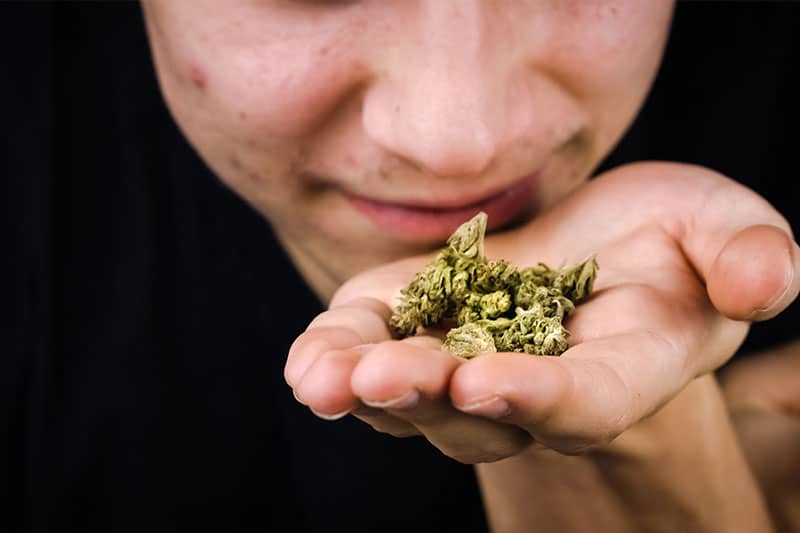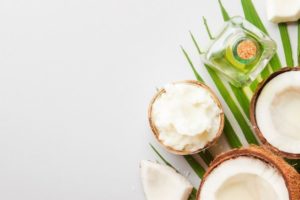The growing public interest and better availability of products is the reason behind the increasing popularity of CBD-based wellness in the U.S. Studies estimate that the country’s CBD industry expects to produce $23.7 billion annually by 2023. That is a lot of money considering how once cannabis-related products fell under Schedule-1 drug regulations.
Nevertheless, cannabis has come a long way from the prohibition days, and the world is finally uncovering its medicinal value, with CBD being the core of its success. However, CBD is not the only plant compound people are talking about these days. Have you ever heard of terpenes? Well, if you haven’t, it is not because you are new to CBD. Plus, you don’t even have to be a CBD oil user to explore something like terpenes. You can consume them on their own too! They are good ole’ volatile plant compounds we come across quite frequently in our lives, and all you need is the right knowledge to get started.
Terpenes are present in a wide variety of plants, including fruits, vegetables, and flowers that you see and consume every day. The cannabis plant, in particular, contains a high concentration of these compounds. Not all CBD products you are using contain terpenes. If you are using a pure CBD product, such as CBD isolate or distillate, you may not find any terpenes in them. Moreover, sometimes they do not even show up at all in the initial product after extraction.
Some companies like to add additional terpenes into their products as they enhance the effects of CBD on the body. But is there any truth behind it? Why are people adding terpenes to their CBD oil? Are there any real benefits, or is it just another way for companies to get more money from their CBD products?
Let’s find out!
What is CBD?
Before we get on with what terpenes are and how you can combine them with CBD for maximum benefits, you must understand what CBD or cannabidiol is. CBD is one of the many plant compounds present in the Cannabis Sativa plant and makes up 40% of its extract. Found in both marijuana and hemp variants of the cannabis plant, the concentration of CBD is higher in that of hemp.
Compounds like CBD are known as cannabinoids. Our body has a whole system of neurotransmitters that interact with cannabinoids like CBD and THC, called the endocannabinoid system. The endocannabinoid system is responsible for regulating several bodily functions, including mood, appetite, sleep, immune response, etc. Much of the therapeutic benefits of CBD are due to this interaction with our endocannabinoid system. While there is still a need for more scientific evidence, current studies suggest that CBD may help alleviate pain, anxiety, stress, insomnia, and several other conditions.
Furthermore, CBD has made new proceedings in being recognized as an alternative treatment for epilepsy in children. The FDA recently approved Epidiolex, an oral suspension of pure CBD that helps in managing symptoms and preventing frequent seizures.
Is CBD Safe To Use?
Most people tend to associate cannabis-related products with recreational drug-use, ignoring the medicinal potential they might have. The good thing is that CBD products are generally safe to use. Unlike THC, the psychoactive compound that produces the ‘high” concerned with marijuana, CBD does not cause any intoxicating effects on the body. Instead, it promotes a sense of calmness and relaxation that adds to a person’s physical and mental wellbeing.
Moreover, the World Health Organisation declared cannabidiol and its derivatives safe to consume, with no public health risks or potential for dependency, so you are looking at minimal risks when adding CBD to your daily routine. One thing you should keep in mind is that CBD affects each person differently, and you might experience temporary side effects that are not alarming in any case. These side effects include dry mouth, drowsiness, fatigue, or a loss of appetite. CBD may also interact with any additional medications that you are taking and decrease their bioavailability in the body. So, you should do your research before trying anything remotely CBD.
What Are Terpenes?
Have you ever wondered why your favorite fruit smells a certain way? You must have also noticed the earthy, sometimes nutty aroma of your favorite cannabis strain and wondered why does it have that scent? Well, all of this is because of terpenes. They are volatile hydrocarbons that produce aromas to attract insects for pollination, allow the plant to communicate with their surroundings, and deter predators as well. Considering the number of distinct scents each plant has, we can say that terpenes are everywhere around us.
There are well over hundreds of different types of terpenes found in plants. Scientists have discovered 200 of these in the cannabis plant alone. The synthesis of terpenes occurs in the same glands as CBD and THC, which means that there might be some kind of connection between the compounds and their medicinal properties.
Compounds like terpenes have a strong odor and are easily recognized by receptors in our nose. Terpenes are present in essential oils as well, and holistic healers use them for aromatherapy because of their natural relaxing effects on the body.
Several factors can contribute to the terpene profile of the cannabis plant. These include climate, harvesting time, and age of the plant at the time of harvesting. While not all terpenes have the desired concentration needed for extraction from industrial hemp, recent studies have shown that some might help in enhancing the therapeutic value of CBD. Moreover, scientists also believe that terpenes may have similar therapeutic benefits that are associated with CBD.
The Use Of Terpenes Has Been Around For Centuries!
Although the hype surrounding CBD terpenes is due to recent evidence from scientific studies, they have been the foundation of Chinese medicine for centuries. Today, scientists rely on folk medicine to design plant-based drugs that can alleviate symptoms of several modern diseases, and terpenes are a significant factor in making this possible.
Traditional Chinese healers used terpenes to treat a wide range of health conditions back in the day. For example, they made a special tea from the twigs and barks of the yew tree, giving it to cancer patients to manage symptoms. The yew tree contains Paclitaxel, a terpene that has significance in chemotherapy and treating different forms of cancer. Moreover, the calming, sedative properties of terpenes were perfect for a speedy recovery from any illness.
The Chinese weren’t the only people with an eye for the therapeutic properties of terpenes. They were also an integral part of Ayurvedic Indian medicine 3000 years ago, traditional therapy that utilizes herbal formulations, minerals, and metals to treat chronic conditions. Let’s take an example. Turmeric is a crucial ingredient in ayurvedic medicine, and its terpene profile has anti-inflammatory, antioxidant, digestive, and diuretic properties. Pretty insane, right?
Terpenes vs. Terpenoids –
Is There A Difference?
If you are reading something about terpenes, you will come across the term terpenoid. While people use both the terms interchangeably sometimes, you must know that terpenes and terpenoids are two separate compounds. It all boils down to their molecular structure, something which makes them distinct from each other.
When we compare CBD terpenes and terpenoids, the fresh scent that you are getting from the hemp plant is due to the terpene secreted in its glands. Curing and drying the hemp flower results in the oxidation of this aromatic hydrocarbon, which then converts it into a terpenoid. Hence, the change in molecular structure is due to both these processes that remove moisture from the plant.
Terpenoids are more commonly used for their scent and are not combined with CBD much. Companies usually add these compounds into essential oils, perfumes, and spices to trigger a specific aroma in their products.
CBD with Terpenes – How Terpenes Found in Hemp Affect Your Body?
As we mentioned before, there are almost 200 different terpenes found in the cannabis or hemp plant. While some have similar therapeutic properties, others are quite different and specific in the way they react with our bodies. Back in the day, scientists believed that the effect of terpenes on the body was due to olfactory processing since aromas can influence mood. Hence, people thought that terpenes were olfactory stimulants that triggered emotions.
However, this misconception changed as more evidence came forward. While olfactory triggers are equally important, terpenes can also directly influence the production of neurotransmitters, such as dopamine and serotonin in the body. In simple words, terpenes can have a positive influence on your mental and physical health.
All in all, let’s take a look at some of the terpenes found in the Cannabis Sativa plant. We will also analyze how each differs with its effects on our bodies:
Alpha-pinene
The way terpenes are named can tell a lot about their origin. Alpha-pinene, for example, is one of the most commonly used terpenes found in pine-cones, needles, rosemary, basil, and, of course, the cannabis plant. It is a natural anti-inflammatory compound and can relieve anxiety, promoting a sense of comfort. Being a bronchodilator as well, it helps reduce asthma triggers and can alleviate symptoms such as shortness of breath, coughing, wheezing, etc.
Limonene
Limonene is typically present in citrus fruits such as lime, lemon, and oranges, particularly in their zest. The presence of limonene in your CBD oil can increase the absorption rate of other terpenes in the body. Aside from having a refreshing aroma, this terpene also possesses antiviral and antifungal properties. It can also make you feel less anxious, enhance your mood, and reduce inflammation.
Myrcene
Most found in the flowers and buds of the cannabis plant, myrcene has more of an earthy aroma. It comes with tons of therapeutic benefits for its user, including antibacterial and antioxidant properties. It can make you feel a lot more relaxed and can reduce pain and inflammation as well. Moreover, myrcene prevents DNA damage and works as a cough suppressant too.
Caryophyllene
Caryophyllene is common in cinnamon, black pepper, and cloves. It also gives cannabis its spicy, earthy aroma. Like cannabinoids, it can bind with receptors in our endocannabinoid system. It is useful for pain-relief and inflammation.
Linalool
While it may have a funny name, linalool has a floral, refreshing aroma and is mostly present in lavender, chamomile, and hemp. Some CBD brands use it to scent their topicals. Moreover, it may help promote sleep and make you feel more relaxed.
Humulene
Humulene is known to promote sleep and reduce pain. It is most commonly present in hops and has a similar aroma to the plant. It might also have appetite-suppressant and anti-inflammatory properties.
Terpinolene
Apart from the cannabis plant, you can find terpinolene is rosemary and sage. The compound is a natural antioxidant and antibacterial. It has a smokey aroma and can reduce activity in the brain to make you feel less anxious.
Enhancing The Therapeutic
Benefits of CBD – Terpenes and The Entourage Effect
Even though CBD itself has so many therapeutic benefits, imagine if you somehow combined all these positive effects with those of the terpenes found in the cannabis plant. The medicinal value of that CBD product will be unmatched. Terpenes certainly are significant for people willing to try CBD products. They can work together with this magical cannabinoid and enhance its effects on the body, which is why using a CBD oil with additional terpenes is always a good idea.
You can pick and choose the most suitable terpene profile you want in your CBD product and get the most out of your experience. Adding limonene and pinene to your CBD will provide you with much-needed stress-relief and energy. If you are looking to relax and take a break, then linalool and myrcene may work like a charm. It usually depends on what kind of condition you want to treat.
The best part about hemp extracts is that they contain a variety of plant compounds, including cannabinoids like THC, terpenes, flavonoids, plant waxes, etc. When these compounds are efficiently interacting with CBD in the right amounts, they increase the therapeutic value of CBD and result in a phenomenon known as the entourage effect. Each strain of hemp has a terpene profile of its own and can have varying effects on the body.
Does My CBD Oil Contain Terpenes? Full Spectrum and Broad-Spectrum CBD Oil
You must have a clear understanding now why adding terpenes to your CBD oil might be perfect for you. However, finding a high-quality, terpene-rich CBD product is a little tricky. Extraction processes isolate CBD from the hemp plant, and little to no terpene content reaches the final product. Moreover, terpenes are highly volatile compounds and get damaged easily with heat. So, extractions methods that involve a lot of heating processes do not guarantee a stable terpene profile.
CO2 extraction is probably the safest method to get the most out of your hemp plant. The CO2 separates all essential compounds from the plant matter by acting as a solvent. It also does not involve any heat, so you are looking at a high terpene profile with suitable ratios of cannabinoids too.
Before buying any CBD products, you should always look at third-party test reports to ensure you are getting the right compounds in your CBD oil. If you are looking to experience the effects of CBD in full swing, we recommend choosing brands that sell Full-spectrum and Broad-spectrum variants of CBD oil. Full-spectrum CBD oil contains all the necessary plant compounds, including terpenes and cannabinoids, like THC, that ensure the entourage effect kicks in. Moreover, if you do not want any THC showing up in a test, you should opt for a broad-spectrum product as it contains the full-terpene profile minus the THC.
Bottomline
Terpenes are something you should always consider adding to your CBD routine. They are plant-based aromatic compounds with tons of benefits and positive effects on the body. Combining them with CBD helps you take your experience to a whole new level.
Next time you go online looking for a CBD product, make sure a full-spectrum CBD oil with lots of healthy terpenes ends up in your shopping cart. Want to get started right now? Head over to our shop and choose from some of the best brands in the market. They offer high-quality full-spectrum and broad-spectrum products with a stable terpene profile.
FAQs About CBD with Terpenes
Question: What are terpenes in CBD?
Answer: Terpenes are volatile compounds found in the Cannabis Sativa plant. They have strong aromas and offer a wide range of health benefits, including relief from pain, anxiety, stress, and inflammation.
Question: What is the difference between CBD and Terpenes?
Answer: CBD is a cannabinoid found in hemp and marijuana variants of the cannabis plant. It is a phytochemical and has therapeutic properties. Terpenes are hydrocarbons with strong aromas and are found in a variety of plants.
Question: Do CBD terpenes get you high?
Answer: No, CBD terpenes cannot get you high, However, Full-spectrum products that contain terpenes also have a trace quantity of THC that may produce mild intoxicating effects on the body.
Question: How do terpenes affect CBD?
Answer: Terpenes interact with CBD to enhance its therapeutic benefits on the body. This phenomenon is known as the entourage effect.
Question: What terpenes are best for anxiety?
Answer: Limonene, myrcene, alpha-pinene can reduce anxiety and make you feel more relaxed.










